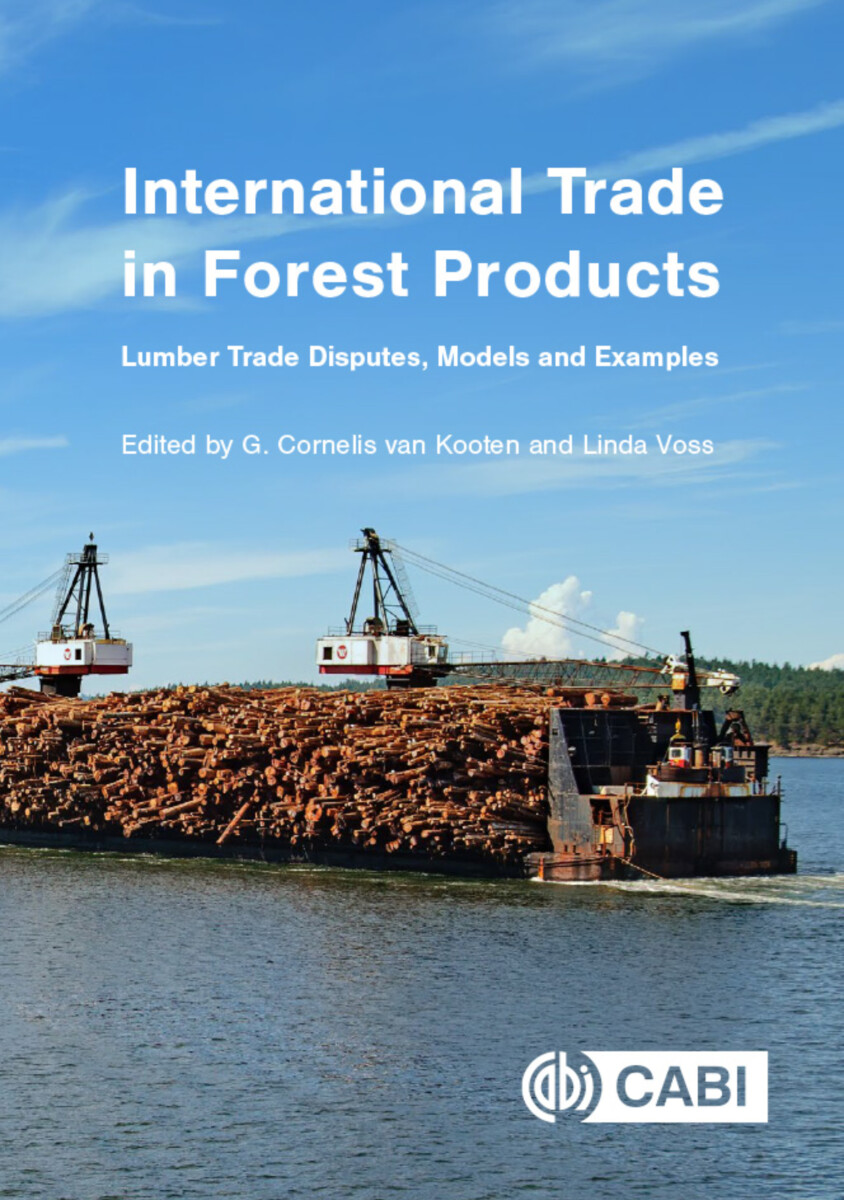International Trade in Forest Products
Lumber Trade Disputes, Models and Examples
- Publisher
CABI - Published
30th March 2021 - ISBN 9781789248234
- Language English
- Pages 192 pp.
- Size 6" x 9"
Because of the long-standing Canada-U.S. lumber trade dispute and the current pressure on the world's forests as a renewable energy source, much attention has been directed toward the modelling of international trade in wood products. Two types of trade models are described in this book: one is rooted in economic theory and mathematical programming, and the other consists of two econometric/statistical models--a gravity model rooted in theory and an approach known as GVAR that relies on time series analysis. The purpose of the book is to provide the background theory behind models and facilitate readers in easily constructing their own models to analyze policy questions that they wish to address, whether in forestry or some other sector. Examples in the book are meant to illustrate how models can be used to say something about a variety of issues, including identification of the gains and losses to various players in the North American softwood lumber business, and the potential for redirecting sales of lumber to countries outside the United States. The discussion is expanded to include other products besides lumber, and used to examine, for example, the effects of log export restrictions by one nation on all other forestry jurisdictions, the impacts of climate policies as they relate to the global forest sector, and the impact of oil prices on forest product markets throughout the world. This book will appeal to practicing economists and researchers who wish to examine various policies that affect international trade, whether their interest is local or international in scope. Because the book provides the theoretical bases underlying various models, students and practitioners will find this a valuable reference book or supplementary textbook.
Key Points:
- The book is timely as we are currently in the middle of a Canada-U.S. softwood lumber dispute that still needs to be resolved. Much work is still required to determine how all wood products, and not just lumber, are affected at the global level.
- Four modelling approaches are provided to enable the reader to determine which might be most appropriate for solving the policy issues they might wish to examine.
- Forests are currently under threat from continued deforestation and, more recently and related, from exploitation due to the designation of wood biomass as an important source of renewable energy. Indeed, many countries intend to rely on wood biomass to meet between 40 and 50 percent of their renewable energy targets.
- The book provides readers with the underlying theory and computer codes that will help them construct their own models.
1. Introduction – G Cornelis van Kooten, University of Victoria, Canada
2. Canada - U.S. Softwood Lumber Dispute: Background – G Cornelis van Kooten, University of Victoria, Canada, Harry Nelson, University of British Columbia, Canada and Fatemeh Mokhtarzadeh, University of Victoria, Canada
3. Spatial Price Equilibrium Trade Modelling: Theory – G Cornelis van Kooten, University of Victoria, Canada and Craig Johnston, Bank of Canada, Canada
4. Modeling Bilateral Forest Products Trade – Craig Johnston, Bank of Canada, Canada, Brad Stennes, Canadian Forest Service, Canada and G Cornelis van Kooten, University of Victoria, Canada
5. Economic Analysis of a Softwood Lumber Quota Regime and a Policy To Subsidize Biomass Generation of Electricity – Fatemeh Mokhtarzadeh, University of Victoria, Canada and G Cornelis van Kooten, University of Victoria, Canada
6. Global Forest Products Trade Model – Prakash Nepal, USDA Forest Products Laboratory, USA, Joseph Buongiorno, University of Wisconsin-Madison, USA, Craig Johnston, Bank of Canada, Canada, Jeffrey Prestemon, U.S. Forest Service, USA and Jinggang Guo, U.S. Forest Service, USA
7. Softwood Lumber Trade and Trade Restrictions: Gravity Model – Xintong Li, University of Victoria, Canada, Fatemeh Mokhtarzadeh, University of Victoria, Canada and G Cornelis van Kooten, University of Victoria, Canada
8. A Global Vector Autoregression Model for Softwood Lumber Trade – Fatemeh Mokhtarzadeh, University of Victoria, Canada
9. Spatial Price Equilibrium Trade Modelling: Theory – G Cornelis van Kooten, University of Victoria, Canada
G. Cornelis van Kooten
G. Cornelis van Kooten is at University of Victoria, Canada.
Linda Voss
Linda Voss is at University of Victoria, Canada.


